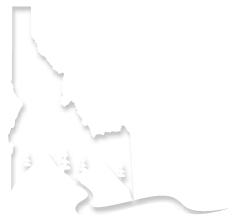Here's How Time-Starved Entrepreneurs Can Still Make Things Look Good
You’re juggling invoices, answering emails at red lights, maybe even plunging a toilet between meetings. The last thing you want to do is learn the ins and outs of graphic design. Still, in a world where a mediocre flyer or outdated Instagram post can quietly dull your business’s edge, design isn’t optional. The good news? You don’t need to be a creative genius or have endless hours to spare. You just need a little direction, a few tricks in your back pocket, and an ability to say, “good enough,” with conviction.
Think in Shapes, Not Art
Let’s start here: most of what catches your eye online or in print isn’t complicated—it’s just shapes playing nicely together. Rectangles, circles, bold lines—these are your friends. Instead of trying to reinvent the wheel every time you design a promo, think like a kindergartener with construction paper. Arrange your shapes so they create balance and hierarchy: the eye should always know where to go first. This keeps things looking clean even if your layout was thrown together between customer calls.
Color Isn’t Just a Vibe—It’s a Strategy
Color choices should be deliberate, not just based on what looks “pretty.” Choose two or three main colors that reflect how you want people to feel about your business—trust, energy, calm—and stick with them like glue. If every post or flyer feels like it came from a different world, people won’t remember who you are. But if your visuals show up consistently—same blues, same punchy red accent—folks start recognizing you before they even read a word. That’s branding without the big agency price tag.
Font Matching Doesn’t Need to Be a Headache
If you're worried about pairing typefaces like a pro, the truth is, you don’t need a design degree or a pricey subscription. There are simple ways to find fonts that take the guesswork out of the equation and let you move forward with confidence. Online tools can now identify fonts from screenshots or websites in seconds, saving you from endless scrolls through font libraries or frustrating mismatches. This kind of shortcut means you spend less time tinkering and more time making your work look polished, cohesive, and unmistakably yours.
Templates Are Not Cheating
There’s no award for designing from scratch every time. Use templates like a chef uses mise en place—it just speeds everything up. Whether you’re making a menu, a sale announcement, or a thank-you card, start from a solid template and tweak the colors, words, and images. This isn’t about avoiding effort. It’s about channeling it where it matters—into your product, your customer service, or that thing you do better than anyone else. Your visuals just need to not get in the way.
Use Photos With Purpose, Not Just Because You Can
Every small business owner has fallen into the stock photo trap at least once. Smiling office workers? Random mountainscapes? Pass. Use photos only when they actually say something about what you do or who you are. Better yet, take your own. A blurry shot of you brewing coffee or packing an order beats a sterile stock photo every time. It’s honest. It’s real. And in a world full of filters, that goes a long way.
Design for Scroll, Not Just Print
Even if your heart is in postcards and bulletin boards, your customers live on screens. So think vertically. Use big, bold text. Break things up into digestible chunks. Think about the experience of someone half-watching TV while thumbing through your content. You’re not just designing—you’re interrupting. Make it worth their while with something that pops immediately and communicates clearly, no sound or context needed.
Don’t Aim for Perfect—Aim for Done
Perfection is a luxury most small business owners can’t afford. That flyer? It doesn’t need to win an award. It just needs to get someone to notice, click, call, or stop in. Spend 20 minutes max. If it looks clean, clear, and on-brand, hit “publish” or “print” and move on. Your energy is a finite resource. Use it wisely. The goal here is progress, not perfection—and in business, done is always better than perfect.
You don’t have to be a designer. You just have to care enough to not be forgettable. In the end, graphic design for a small business isn’t about flexing creativity—it’s about clarity, trust, and recognition. By leaning into simplicity, consistency, and a bit of visual strategy, you can make your brand look pulled together, even if everything behind the scenes feels chaotic. And if you’ve got five minutes and a Wi-Fi signal, you’ve got more than enough time to make something that works.
Discover the heart of adventure in the Wood River Valley with Hailey Idaho and join our newsletter to stay updated on all the exciting events and experiences waiting for you!


